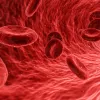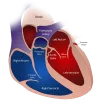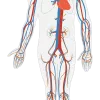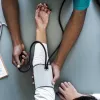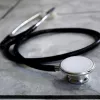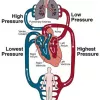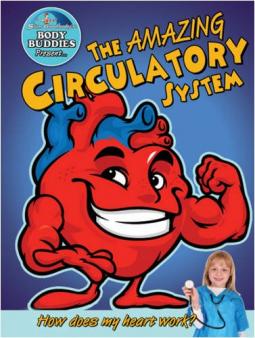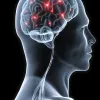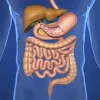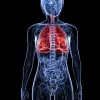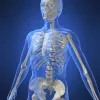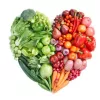Important update from TheSchoolRun
For the past 13 years, TheSchoolRun has been run by a small team of mums working from home, dedicated to providing quality educational resources to primary school parents. Unfortunately, rising supplier costs and falling revenue have made it impossible for us to continue operating, and we’ve had to make the difficult decision to close. The good news: We’ve arranged for another educational provider to take over many of our resources. These will be hosted on a new portal, where the content will be updated and expanded to support your child’s learning.
What this means for subscribers:
- Your subscription is still active, and for now, you can keep using the website as normal — just log in with your usual details to access all our articles and resources*.
- In a few months, all resources will move to the new portal. You’ll continue to have access there until your subscription ends. We’ll send you full details nearer the time.
- As a thank you for your support, we’ll also be sending you 16 primary school eBooks (worth £108.84) to download and keep.
A few changes to be aware of:
- The Learning Journey weekly email has ended, but your child’s plan will still be updated on your dashboard each Monday. Just log in to see the recommended worksheets.
- The 11+ weekly emails have now ended. We sent you all the remaining emails in the series at the end of March — please check your inbox (and spam folder) if you haven’t seen them. You can also follow the full programme here: 11+ Learning Journey.
If you have any questions, please contact us at [email protected]. Thank you for being part of our journey it’s been a privilege to support your family’s learning.
*If you need to reset your password, it will still work as usual. Please check your spam folder if the reset email doesn’t appear in your inbox.
Human circulatory system
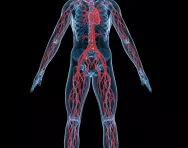
The circulatory system is one of the most important systems in the body. Made up of the heart, blood and blood vessels, the circulatory system is your body's delivery system. Your heart plays and important part in being healthy. It keeps all the blood in your circulatory system flowing. Blood helps oxygen get around your body. When you exercise you can feel your pulse, it tells you how fast your heart is pumping.
The body's circulatory system is responsible for transporting materials throughout the entire body. It delivers nutrients, water, and oxygen to your billions of body cells and carries away wastes such as carbon dioxide that body cells produce. It is an amazing highway that travels through your entire body connecting all your body cells.
At the centre of this system is the heart, an amazing organ. The heart beats about 3 billion times during an average lifetime. It is a muscle about the size of the fist. The heart is located in the centre of the chest slightly to the left. Its job is to pump blood and keep the blood moving throughout the body. The blood is pumped around a complex network of blood vessels extending to every part of the body.
Blood carries the oxygen and nutrients needed to fuel the activities of the body’s tissues and organs, and it plays a vital role in removing the body’s waste products. An average-sized adult carries about 5 litres (9 pints) of blood.
Top 10 facts
- If you were to lay out all of the arteries, capillaries and veins in one adult, end-to-end, they would stretch about 60,000 miles (100,000 kilometres).
- It takes 20 seconds for blood to circulate the entire body. Oxygenated blood leaves the aorta at about 1 mile an hour.
- The power output of the heart ranges from 1-5 watts per minute, which is the equivalent to the usage of a 60 watt bulb. It has been said that enough energy is produced by the human body in a day to drive a truck 20 miles.
- Red blood cells live for up to 4 months and make approximately 250,000 round trips around the body before returning to the bone marrow, where they were born, to die.
- Between 2.5 and 3 million red blood cells (called erythrocytes) are lost and replaced every second.
- Across the animal kingdom, heart rate is related to body size: in general, the bigger the animal, the slower its resting heart rate. An adult human has an average resting heart rate of about 75 beats per minute, the same rate as an adult sheep. But a blue whale's heart is about the size of a small car, and only beats five times per minute. A shrew, on the other hand, has a heart rate of about 1,000 beats per minute.
- The ancient Egyptians believed the heart, rather than the brain, was the source of emotions, wisdom and memory, among other things.
- After circulating within the body for about 120 days, a red blood cell will die from aging or damage. Bone marrow constantly manufactures new red blood cells to replace those that perish.
- The oxygen-rich blood that flows through your arteries and capillaries is bright red. After giving up its oxygen to your bodily tissues, your blood becomes dark red as it races back to your heart through your veins.
- “Ventricle” means “little belly".
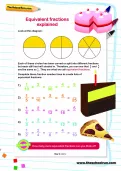

Boost Your Child's Learning Today!
- Start your child on a tailored learning plan
- Complete the activities added each week
- Watch your child's maths & English confidence grow!
Did you know?
- We see and hear about hearts everywhere. A long time ago, people even thought that their emotions came from their hearts, maybe because the heart beats faster when a person is scared or excited. Now we know that emotions come from the brain, and in this case, the brain tells the heart to speed up.
- Your heart is a very strong muscle that pumps blood around your body. It is made of four chambers, two upper chambers and two lower chambers. Blood enters the upper chambers. These squeeze and push the blood into the lower chambers, which then squeeze and push the blood out of your heart.
- The heart works tirelessly – more than 2.5 billion times over an average lifetime – to pump blood around the body. The heart’s contractions or ‘squeezes’ are triggered by electrical impulses that come from a specialised area of heart tissue.
- Your pulse is a measure of how fast your heart is beating. It is the number of beats your heart makes in one minute. Your heart beats faster or slower depending on what you are doing. You can feel your pulse at certain points on your body. The easiest place to feel it is in your wrist, using the first two fingers of your other hand. When you sit, the average heart beats about 80 times per minute. However, everybody is different, so your pulse could be higher or lower than this.
- When you exercise, your heart beats more quickly. This is because your muscles are working harder and need more oxygen to keep going. Your lungs also work harder, making you breathe more quickly to get more oxygen. When you sleep, your muscles need less oxygen, so your heart slows down.
Circulatory system gallery:
- Magnified red blood cells
- A diagram of the human heart
- Blood vessels in the body
- A blood pressure check
- Doctors use stethoscopes to listen to heart and lung sounds
- A diagram of the circulatory system
Gallery
About
The circulatory system is centred on the heart, an amazing organ that constantly works to pump blood around blood vessels in every part of the body. Blood carries all the things, like oxygen, that cells need to thrive and keep us healthy.
The heart is made up of four different blood-filled areas, and each of these areas is called a chamber. There are two chambers on each side of the heart. One chamber is on the top and one chamber is on the bottom.
The two chambers on top are called the atria. (If you're talking only about one, call it an atrium.) The atria are the chambers that fill with the blood returning to the heart from the body and lungs. The heart has a left atrium and a right atrium.
The two chambers on the bottom are called the ventricles. The heart has a left ventricle and a right ventricle. Their job is to squirt out the blood to the body and lungs. Running down the middle of the heart is a thick wall of muscle called the septum. The septum's job is to separate the left side and the right side of the heart.
The atria and ventricles work as a team — the atria fill with blood, then push it into the ventricles. The ventricles then squeeze, pumping blood out of the heart. While the ventricles are squeezing, the atria refill and get ready for the next contraction.
The blood moves through many tubes called arteries and veins, which together are called blood vessels. These blood vessels are attached to the heart. The blood vessels that carry blood away from the heart are called arteries. The ones that carry blood back to the heart are called veins.
The human body needs a steady supply of blood to keep it working right. Blood delivers oxygen to all the body's cells. To stay alive, a person needs healthy, living cells. Without oxygen, these cells would die. If that oxygen-rich blood doesn't circulate as it should, a person could die.
Remember that your heart is a muscle. In order for it to be strong, you need to exercise it. How do you do it? By being active in a way that gets you slightly out of breath, like skipping, dancing, or playing tennis or football. Try to be active every day for at least 30 minutes.
Words to know for the circulatory system:
Aorta - the main artery in mammals that carries blood from the left ventricle of the heart to all the branch arteries in the body except those in the lungs.
Arteries - a blood vessel that is part of the system carrying blood under pressure from the heart to the rest of the body.
Atrium - one of the upper chambers of the heart that takes blood from the veins and pumps it into a ventricle.
Capillaries - an extremely narrow thin-walled blood vessel that connects small arteries arterioles with small veins to form a network throughout the body.
Carbon dioxide - a heavy, colourless, odourless gas.
Cells - the cell is the basic unit of life. Some organisms are made up of a single cell, like bacteria, while others are made up of trillions of cells. Human beings are made up of cells, too.
Circulatory - relating to the circulation of the blood.
Complex - made up of many interrelated parts.
Contractions - a tightening or narrowing of a muscle, organ, or other body part.
Nutrients - a substance that provides nourishment.
Organ - a complete and independent part of a plant or animal that has a specific function.
Oxygen - a colourless, odourless gas that is essential for plant and animal respiration.
Perish - to come to an end or cease to exist.
Pulse - the regular expansion and contraction of an artery, caused by the heart pumping blood through the body.
Transporting - to carry somebody or something from one place to another.
Veins - a blood vessel that carries blood to the heart.
Waste - unwanted or unusable remains, or by-products.
Related Videos
Just for fun...
- Try some circulatory games and puzzles
- Complete a heart and circulatory system quiz
- Download free circulatory system quizzes, puzzles and memory games from Curiscope
- A heart to print out and label
- Try the heartbeat calculator
- Play the Blood Typing game and find out more about blood types
Best kids' books about the circulatory system and the heart
Find out more
- A kids' guide to the heart and blood
- Watch BBC Teach video about the circulatory system
- Download a factsheet and worksheet about blood and the circulatory system and find out how and why people donate blood
- Heart and Circulatory system quiz
- The role of blood in the circulatory system
- See inside the human body and find out more about the circulatory system
- Watch a medical video of how the chambers of the heart contract and relax to push blood through the circulatory system
- Watch a BBC Bitesize video about how our circulatory system keeps us alive
See for yourself
- Watch a cartoon that describes how the heart works
- See exactly how your heart pumps blood throughout your body
